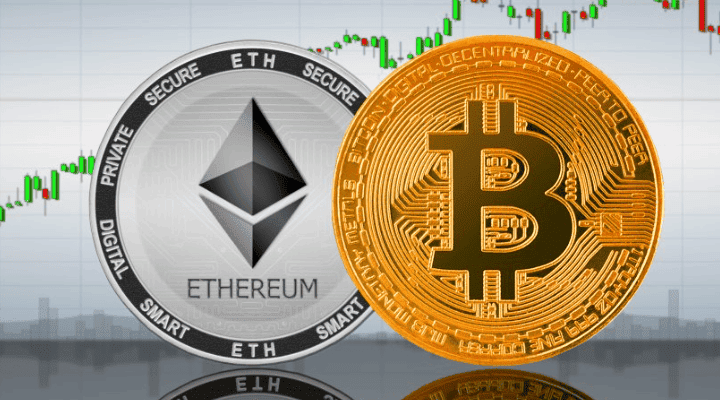The Solana blockchain has set a new milestone in its journey toward decentralized governance and enhanced security. As of recent reports, Solana's validator nodes have surged to an all-time high, a reflection of the growing support and trust in the network's capabilities. This growth is also echoed in the rising participation in Solana’s staking ecosystem, with the percentage of staked Solana (SOL) tokens reaching an impressive 77%.
This record surge in Solana validator nodes and staking participation is significant for several reasons. Not only does it demonstrate the increasing trust in the blockchain’s security and speed, but it also indicates that more users and institutions are recognizing the potential rewards of participating in Solana’s staking mechanism. Staking on Solana provides users with a chance to earn passive income through staking rewards, while simultaneously helping to secure the network.
Solana's Rising Popularity and Its Impact on Validator Nodes
The rise in Solana validator nodes can be attributed to the growing demand for faster and cheaper alternatives to Ethereum. Solana’s transaction throughput, low fees, and high scalability have positioned it as one of the most attractive blockchain platforms in the industry. As a result, the blockchain has seen an influx of developers, projects, and investors.
The surge in validator nodes demonstrates a deepening decentralization within the Solana network, which is critical for its continued growth and resilience. Validator nodes are integral to the Proof of Stake (PoS) consensus mechanism, which powers Solana's blockchain. These nodes validate transactions, ensuring that they are legitimate and secure. A larger number of validators means a more decentralized network, leading to stronger security and less risk of centralization.
Moreover, the increase in validator participation ensures that Solana can handle more transactions, improving its scalability. This further boosts confidence in the blockchain, as it can accommodate growing demand without compromising speed or affordability.
Staking Participation on Solana Reaches 77%
Another notable achievement is the 77% staking participation rate. This figure reveals that a significant portion of Solana’s total supply is being actively staked. The high level of participation indicates that more users are taking advantage of the staking opportunities provided by Solana, seeing it as a valuable way to earn rewards and contribute to the network’s overall security.
Staking in Solana’s ecosystem allows token holders to lock their SOL tokens in the network for a predetermined period, in exchange for staking rewards. These rewards typically come in the form of additional SOL tokens, and the longer the tokens are staked, the higher the potential returns. This feature has become increasingly attractive to long-term investors who believe in Solana’s future growth and success.
One of the key benefits of staking on Solana is the relatively low entry barrier. Unlike Ethereum 2.0, which requires users to stake a minimum of 32 ETH, Solana allows for smaller investments, making it accessible to a broader range of participants. Additionally, staking rewards on Solana are often higher compared to many other blockchain networks, further driving its popularity.
The Future of Solana and Its Staking Ecosystem
Looking ahead, Solana’s network is expected to continue expanding, with more projects and applications being built on its fast and scalable infrastructure. The blockchain’s ability to handle large-scale decentralized applications (dApps) and decentralized finance (DeFi) projects positions it as a leading platform in the blockchain ecosystem.
The increased staking participation is also expected to bring more stability to the Solana network. As more tokens are staked, it becomes harder for malicious actors to attack the network. Additionally, the growth in staking rewards is likely to attract more institutional investors, further enhancing the ecosystem's development.
However, as the Solana network continues to grow, it will face challenges. One of the key risks is network congestion, particularly during periods of high demand. While Solana has proven to be highly scalable, it will need to continue innovating and adapting to accommodate its expanding user base. Additionally, Solana will need to ensure that validator nodes remain distributed and that the network does not become overly centralized, which could threaten its security.
Conclusion
The recent surge in Solana’s validator nodes and staking participation marks a significant milestone for the blockchain. With 77% of its tokens being staked, Solana is seeing widespread adoption and increased trust in its decentralized governance model. This growth reflects the blockchain’s success in providing a fast, low-cost, and scalable platform that is attracting both individual and institutional investors.
As the staking ecosystem continues to grow, it is clear that Solana’s role in the blockchain space will continue to expand. The combination of high staking participation, decentralization, and strong network security positions Solana as one of the leading blockchain networks in the world today.

 English
English
 Deutch
Deutch
 Espanol
Espanol
 Francais
Francais
 Portugues
Portugues
 日本
日本
 한국인
한국인
 Türk
Türk
 Русский
Русский
 Tiếng Việt
Tiếng Việt

